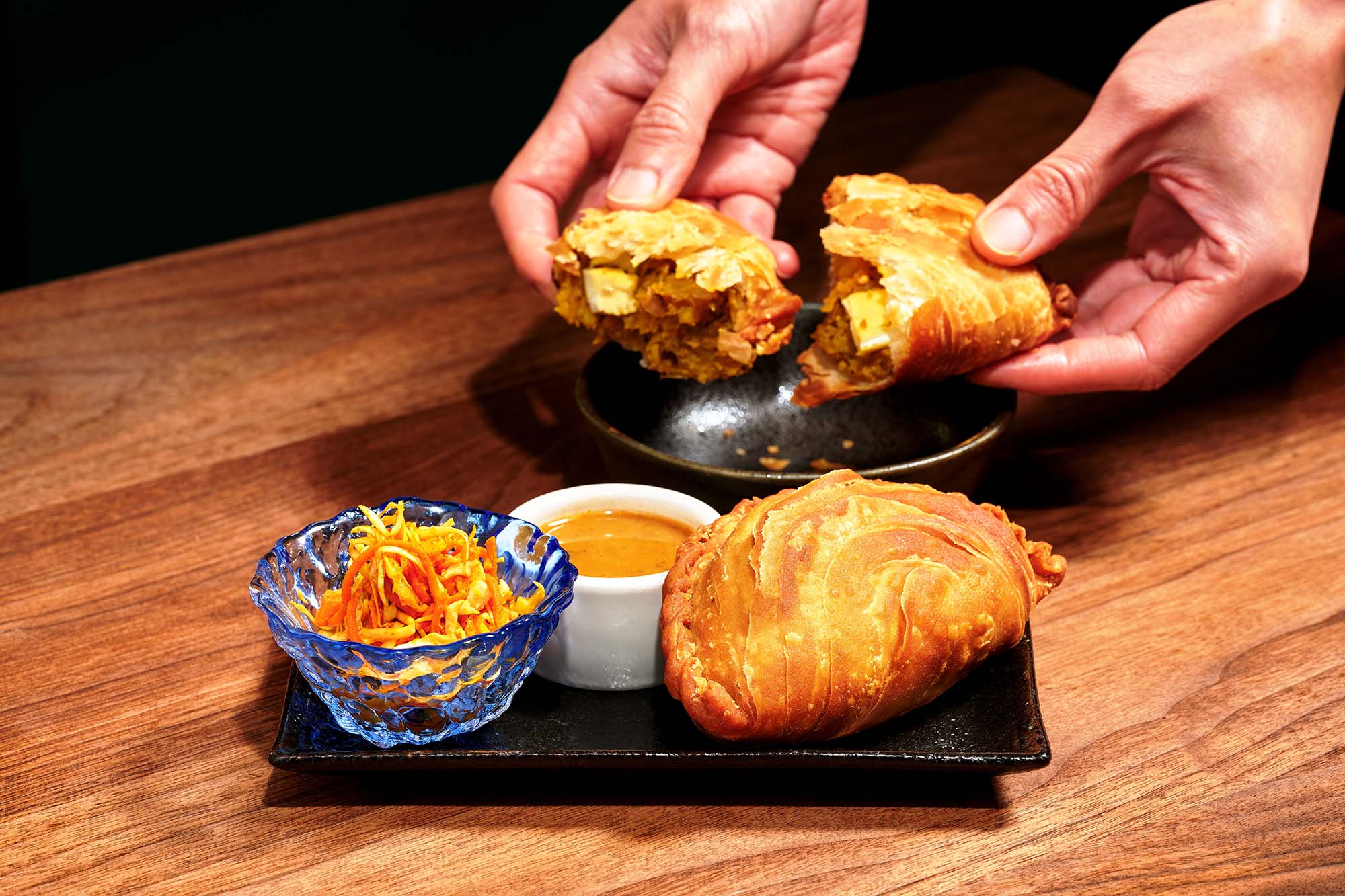At one-year-old Damansara in Noe Valley, it’s tough to choose between the Central Malaysian regional specialties on the menu, including laksa noodle soup, nasi lemak coconut rice with crispy chicken, or Dungeness crab slicked in chili sauce. But pastry obsessives will spot a special treat buried in the small plates section, simply called a curry puff. Upon closer scrutiny, there’s a note: only two per table. Never allowed for takeout. So you’ll have to come in and sit down to appreciate the details of this pastry, which features a spiralized dough, prettily crimped edge and belly full of emphatically seasoned potato.
Some people mistakenly call them samosas or empanadas, which annoys chef Tracy Goh. These are curry puffs, or karipap, and “back in Malaysia, it was my favorite tea-time snack,” she says. Her family would enjoy the puffs in the late afternoon with a cup of tea, coffee or Milo chocolate malt after picking them up from local street vendors that specialized in deep-frying these crisp, golden morsels. They could be deceptively skimpy on the filling — sometimes Goh would buy what appeared to be a nice puff, then bite into mostly air.
Goh had never made curry puffs until after moving to San Francisco, when she missed them so desperately, she attempted to learn the “intimidating” dough. Today she makes them true to the snacks she grew up with in Malaysia, with a specific spice profile and flaky crust. But she includes a couple of concessions to San Franciscans, specifically a bigger size and a dipping sauce. She estimates hers are triple the size and stuffed to the seams. “It’s an American size and weight version of what I would like back in Malaysia,” Goh says.

Goh toasts and grinds her own Malaysian curry blend, a long list of about 10 spices and aromatics, including tangy fenugreek and bright coriander. Along with aromatic curry leaves, those spices season a simple potato filling. Sometimes she mixes in chicken and tucks in a wedge of hard-boiled egg, but the filling should be starchy to hold in juices. (There is another version called epok epok with spicy sardines, but despite the tinned fish trend, Goh is not convinced that Noe Valley is ready yet.) The dough is typically made with margarine in Malaysia, but she prefers vegetable shortening, which keeps the fryer clean.
It’s the layering of the dough and the hand shaping of the pastries that make it a labor of love. Goh actually starts with two different doughs, an oil-based dough and a hot water dough, wrapping the former inside the latter, which creates the lamination or layers. Then she flattens it into a rectangle, “rolls it up like a carpet” and repeats several times, to get that spiral pattern. Finally she slices the “carpet” into round cross sections, flips each piece cut-side down and rolls them to less than 2 millimeters thick. Then you have to crimp it around the filling firm and tight, like you mean it — people who are good at pinching dumplings understand. Lightly pressing with a fork won’t work, she says. “The idea is to lock the pastry.”




